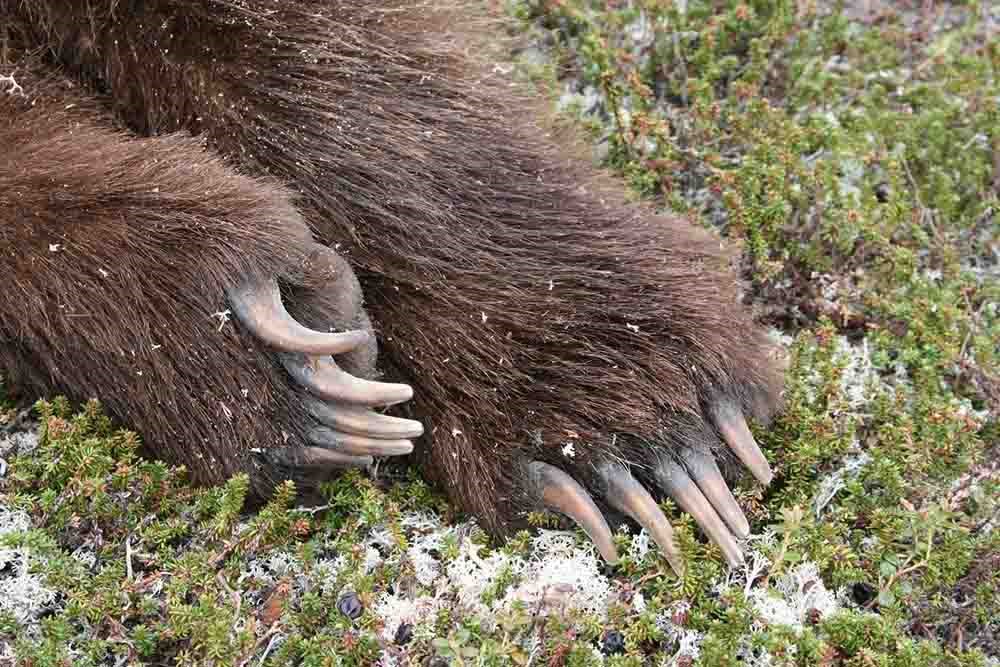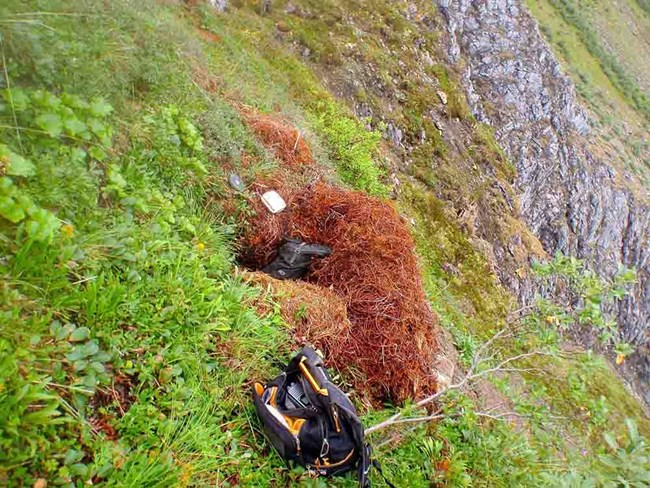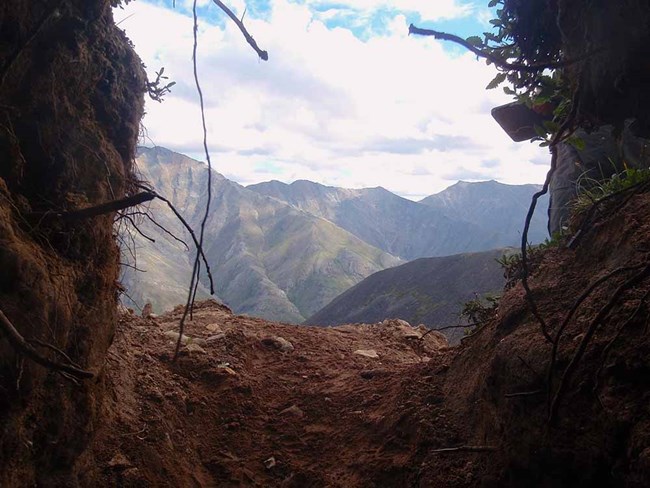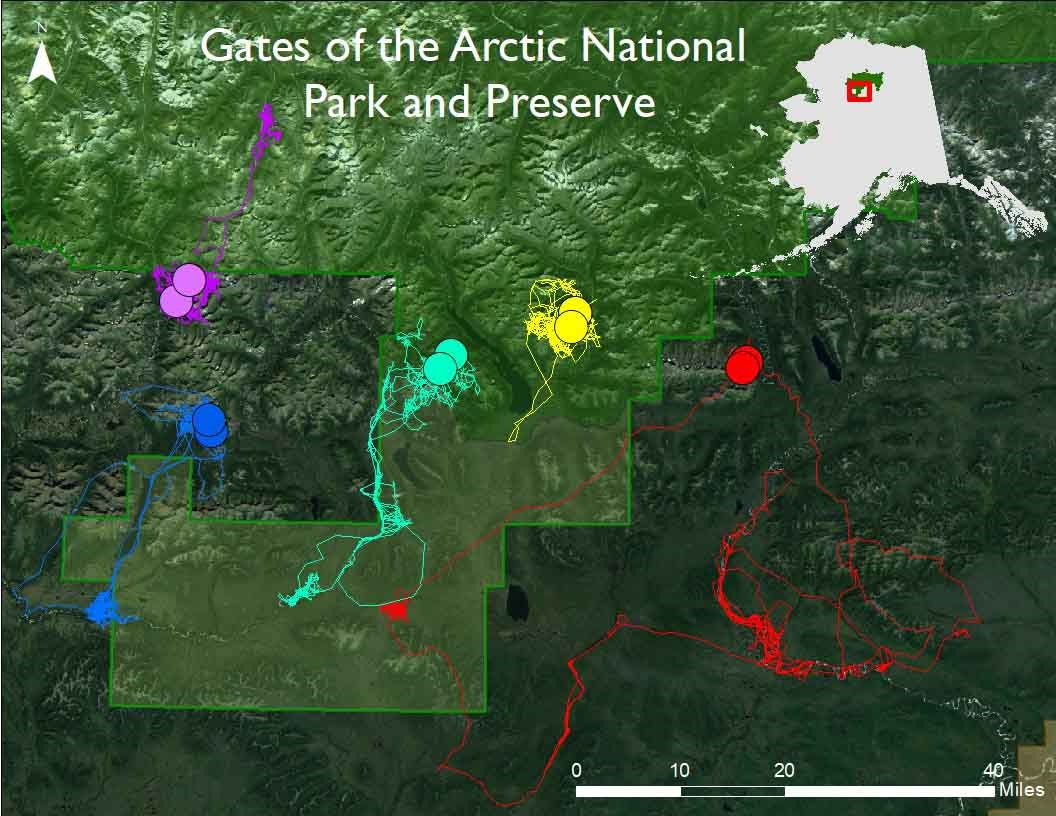Last updated: December 30, 2019
Article
Brown Bear Den Sites

NPS/Matt Cameron

NPS/Matt Cameron
Brown bears rely on past experience to choose den sites that maximize energy conservation. Hibernation is a strategy used by bears to avoid seasonal scarcity of food. In the Arctic, where winter can last up to eight months, it is important that brown bears maximize energy conservation while in their dens. In and around Gates of the Arctic National Park and Preserve, we located 65 dens used by 33 GPS-collared brown bears from 2014-2017. We learned that bears dig their dens on steeper slopes (average: 31°) to improve drainage and den stability, and in areas with deep snowpack, to improve insulation of the den. Both features help to conserve energy. Interestingly, bears further insulated their dens by lining the den floor and entrance with vegetative material, such as grasses and moss.

NPS/Matt Cameron
We learned that brown bears excavate new dens near their previously used dens. Bears likely reduce risk by returning to well-known denning areas rather than pioneering new areas where conflicts with other bears could arise. On average, female and male bears dug their dens < 2.2 miles (3.6 km) and < 3.7 miles (5.9 km) from their previous years’ den, respectively. However, one sub-adult male that we followed for three years denned 14 miles (22.9 km) and 34 miles (54.4 km) from its previous years’ dens. Once weaned, male sub-adults are often forced out of their birth area by their mother to prevent inbreeding and spend the next few years searching for safe high-quality bear habitat. We also found that bears rarely reuse the same den, even though they return to the same area to hibernate. This is likely because, in the Arctic, most dens collapse the following summer as the ground thaws.

Den-site characteristics and selection by brown bears (Ursus arctos) in the central Brooks Range of Alaska
Abstract
Selection and use of dens is a critical behavioral adaption of bears (Ursus spp.) to survive extended periods of resource limitation. We analyzed selection of den sites by brown bears (Ursus arctos) in an arctic montane environment from 2014-2017. We used GPS data from 51 instrumented bears to physically locate, identify, and describe den sites (n = 33) and to quantitatively model the selection of denning habitat (n = 65 dens over 3 years). We conducted an analysis of den-site selection at the home range (3rd order) scale using variables describing topographic, vegetative, and spatially-explicit fish and wildlife models. We hypothesized four main factors influence den-site selection by brown bears: (1) physiography, (2) proximity to food resources, (3) thermal insulation, and (4) den-area fidelity. We used kernel density estimates to define space use and conditional logistic regression to estimate den selection within individual home ranges. Brown bears selected den sites on steep slopes (>31o) with high snow load potential near their previously used den site. Our results supported our hypothesis that den selection by brown bears was related to thermal insulation, structural stability, drainage, and den-area fidelity.
Sorum, M. S., K. Joly, A. G. Wells, M. D. Cameron, G. V. Hilderbrand, and D. D. Gustine. 2019. Den-site characteristics and selection by brown bears (Ursus arctos) in the central Brooks Range of Alaska. Ecosphere 10(8): e02822. 10.1002/ecs2.2822
